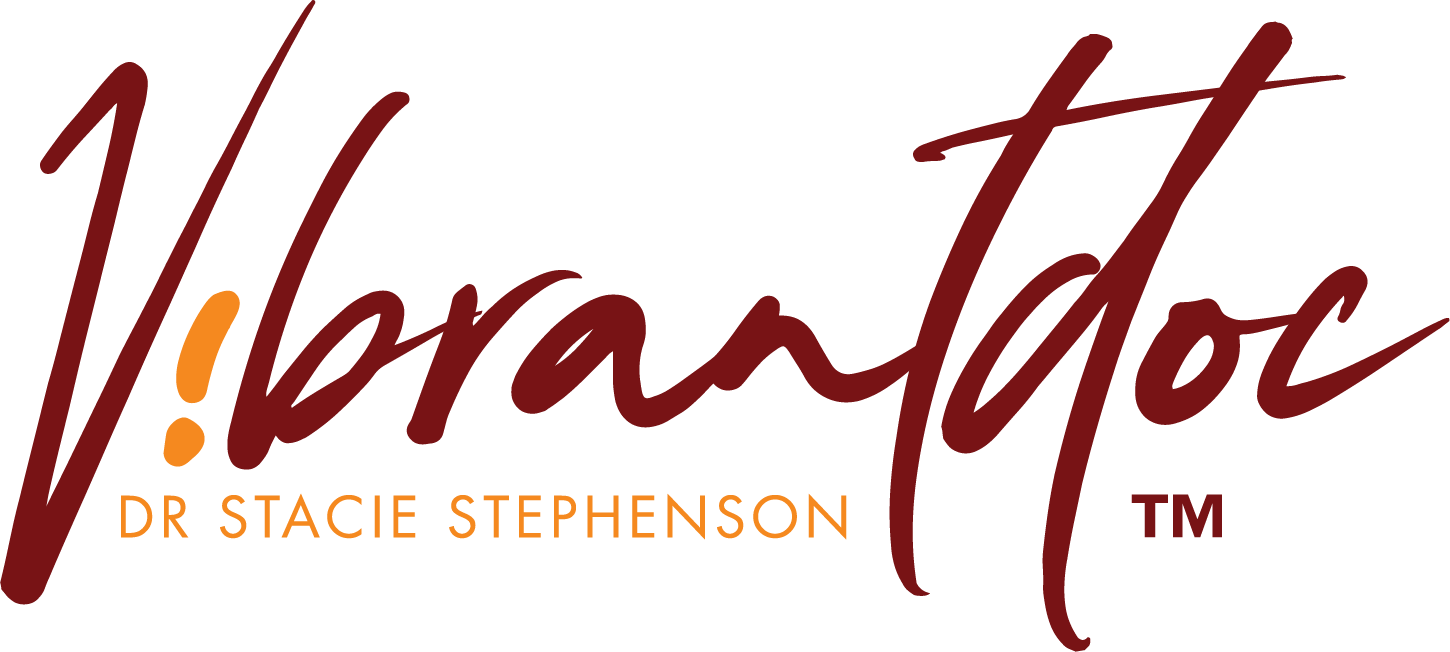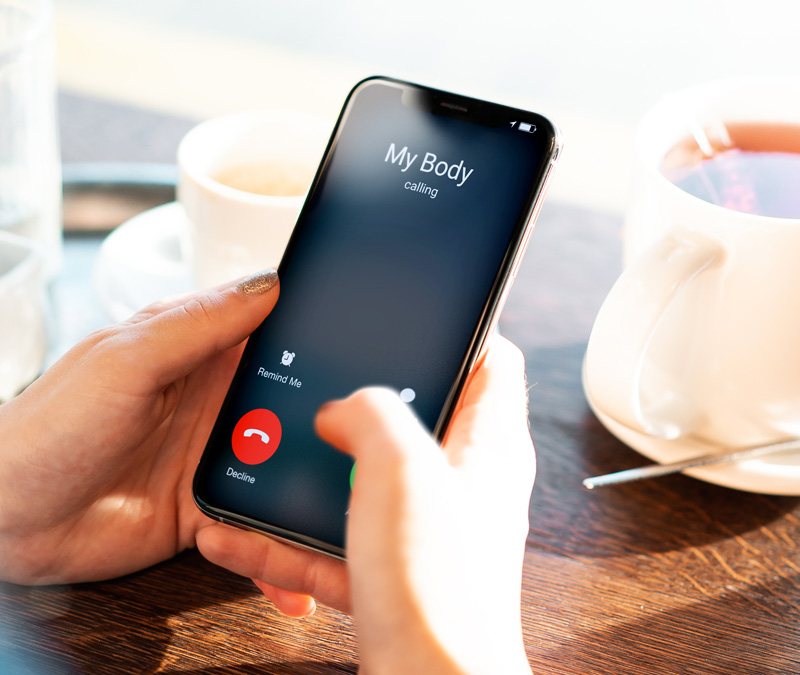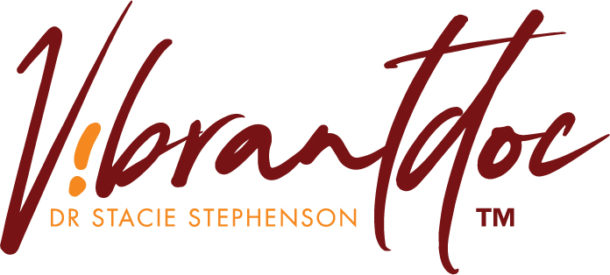It’s a loud loud world, but somewhere inside you is a still small voice guiding you…or trying to. No, it’s not your conscience, or the angel on your shoulder. It’s your body, and it’s got plenty to say about the choices you’ve been making and the way you’ve been choosing to live your life.
People often complain to me about having low energy, feeling dull, having brain fog, not being able to lose weight, concentration problems, aging skin, and a vague feeling that something’s not right. They ask me what to do, and I always tell them the same thing: What’s your body telling you?
This often surprises people, who expect solutions to come from someone else and aren’t generally body aware or internally sensitive. But anyone can listen to their internal cues. Your body is wise and knows when things aren’t working as well as they could be–and it’s trying to tell you all the time. It may not give you an exact diagnosis, but it will tell you whether or not you are interfering with its efforts to keep you healthy, or supporting its natural functions and vitality. If you are interfering, listening to your body can help you figure out what to do differently. If you are supportive, then your body will give you feedback that you are on the right track.
So how do you start listening? Begin by sitting still for a moment, turning off all devices and distractions, and being quiet. How do you feel? Do you feel vibrant, strong, refreshed, energized? Or do you feel slow, heavy, tired, painful? Strung out or relaxed? Optimistic or sad? Just blah? That’s your body talking, and the more you start listening, the more you’ll know what kind of bad habits are hurting you, and which health practices are bringing vibrant energy back into your mind and body.
Why not listen up right now?
Whether it’s a headache, indigestion, a sore knee, or a blue mood, every single symptom you have is trying to tell you something. Symptoms aren’t just uncomfortable sensations you should try to blunt with medication or temporary pleasures like wine or chocolate (tempting as that may seem in the moment). Symptoms are red flags.
A red flag at the beach means don’t go swimming—the surf is dangerous. A red flag in traffic means danger is ahead. A red flag on a boat means it’s either broken down or carrying dangerous cargo. Never ignore a red flag because it’s a warning that something is wrong. Symptoms are your red flags—they signal trouble, and vigilance. That’s valuable information from your body to you. Instead of immediately reaching for the ibuprofen, the acid blocker, or the pinot noir, stop and pay attention.
Once you notice that something doesn’t feel right, the next step is to try connecting the feeling to something you are doing. This won’t always be obvious, but I bet you can make some connections that will be useful to you. Messages from your body aren’t usually that mysterious. You’re not solving some tricky puzzle. Most of us get a lot of the same symptoms, and they are usually related to the same kinds of behaviors. Some of the most common body signals I hear about (and sometimes experience) are headaches, feeling tired, stomachaches, bloating, heartburn, joint pain, all-over achiness, fatigue, anxiety, and brain fog or trouble concentrating. It doesn’t take a genius to figure out that your knee pain is probably due to either overuse, overweight, or an injury, or that a headache might be from stress, not getting enough sleep, or being dehydrated. Digestive symptoms like bloating, nausea, and gas usually mean that you either ate too much, or ate something that doesn’t agree with you, and anxiety as well as depression can mean that your biochemistry is out of whack, or that there is something in your life you need to heal from, admit to, contend with, make peace with, or take action on. Just notice the message and think about what you did that day (or recently) that could be the cause. This is the first step to opening a dialogue with your body.
Listening to your body is like any other habit: It can be hard at first, but if you practice, you will get better and better at it, until it becomes second nature. Unlike some habits (hello, exercise), this one takes very little effort. All you have to do is check in with yourself. Every hour or two (you could even set reminders on your smart phone), stop for a second, take a breath, and direct your mind inward. Ask yourself two questions:
- How do I feel?
- Where does that feeling come from?
Your answers might be physical in nature, like feeling a pain somewhere, or tightness, or fatigue, or stomach discomfort. Also note good feelings, like a sense of energy or a relaxed feeling in your gut, or a sense of being wide awake. Your answers can also be about emotional feelings, such as recognizing that you are feeling a little down, or that you are having trouble concentrating, or that you feel cheerful or like you are on top of everything and your thinking is quick and on-point.
The reason for pinpointing the origin of the feeling, even if you aren’t sure at first where it’s coming from, is to place the idea of checking in with your body into your actual body. Do your best to locate the origin or center of the feeling. Do you feel that fatigue in your head or your chest or your legs? Do you feel that energy in your back or your legs or your brain? Does the sadness come from your head or your heart? You don’t have to figure out what to do about the feeling. Just naming it and determining a general sense of location will begin to make you more body-aware, and that is how you will know what your body is telling you.
I’ve always been a fan of a good positive affirmation. It may sound corny, but I truly believe that repeating something positive to yourself will eventually help you to internalize and believe it. It’s like that old saying, “Fake it until you make it.” It’s an essential part of forming a new habit, it can help you reframe negative thoughts into positive ones, and it keeps you focused on your goals.
Positive affirmations are also great for honing body awareness and reminding you to pay attention to the symptom-messages. Here are some to try. Say any of these (or all of them) to yourself each morning, mid-day, and before going to bed. Consider this part of your dialogue with your body, and your new healthy habit formation:
- I listen to my body.
- My body is wise and tells me what I need to know.
- Every symptom is a message.
- My body’s messages are just for me.
- My body’s messages ask for a response.
- I respond to my body’s messages.
- I decode the clues within my body.
- I follow my body’s clues.
- I live according to what is healthiest for me.
- I take care of myself.
- My body tells me what is best for me.
I choose to do what is best for me.
Just imagine if you actually believed all these things. You can! You can believe them and you can act on them.
So what did your body tell you today?
Once you are in the habit of listening to your body without judgement, you will be able to go beyond a knee-jerk reaction to a symptom and respond consciously to a message.
Let’s say you’re feeling bloated and you have heartburn. If you see that as a symptom, the best solution might seem to be to take an antacid. But if you see it as a message, then you might be more likely to ask yourself, “Why did my body send me that message?”
Stop and think. Why are you bloated? Why is your stomach burning? If it’s a digestive issue, what are you busy digesting when you get these messages? Maybe you ate something that doesn’t agree with you, or you ate too much. Was it pizza? French fries? A couple of beers? Maybe you feel tired after you eat sugar, but you haven’t noticed that connection until you started paying attention. If you eat something and your body sends you a direct message that something is wrong, and you are paying attention, you can avoid the tendency to cover up or push through without addressing the problem. Instead, you can become curious and intervene to test whether starting or stopping certain behaviors changes your symptoms, either making them worse or making them better. Maybe you’ll try eating less at the next meal, or choosing a different food. Every time you change your behavior and that change results in a different body message, you gain more information about your own body.
When you listen and respond consciously to your body’s messages, you open a dialogue with your physical self that can result in better choices and fewer symptoms. It’s like choosing to either A) talk to someone without paying attention, or B) actively engage in a two-way conversation to mutually work on solving a problem.
This is how you can get closer to the cause of your symptoms, so you can solve them rather than covering them up over and over again. So stop ignoring your symptoms! Don’t turn your brain to “do not disturb” when an important message is trying to come through. You might still seek relief through medication, but before you do, see if you can figure out what might be lurking just beyond that red flag. If you can heed those red flag symptoms, assess the threat level, and steer yourself in a new, safer, more health-supportive direction, those symptoms might just disappear.


